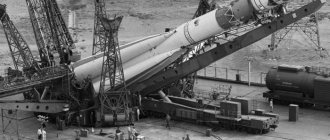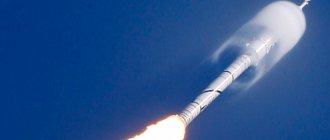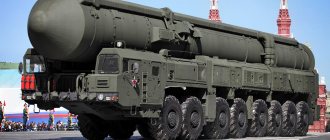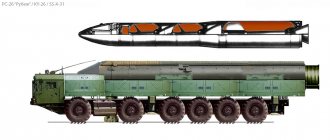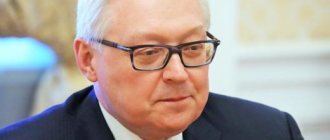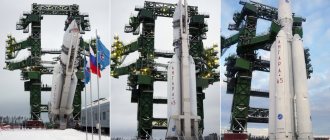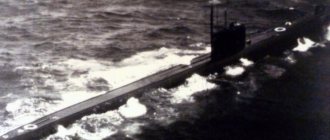Rocket N-1 - "Tsar Rocket"
The N-1 super-heavy launch vehicle was nicknamed the “Tsar Rocket” for its large size (launch weight of almost 2500 tons, height – 110 meters), as well as the goals set during the work on it. The rocket was supposed to help strengthen the defense capability of the state, promote scientific and economic programs, as well as manned interplanetary flights. However, like its famous namesakes - the Tsar Bell and the Tsar Cannon - this design product was never used for its intended purpose.
The USSR began to think about the creation of a heavy superrocket back in the late 1950s. Ideas and assumptions for its development were accumulated in the royal OKB-1. Among the options were the use of the design reserve from the R-7 rocket that launched the first Soviet satellites and even the development of a nuclear propulsion system. Finally, by 1962, the expert commission, and later the country’s leadership, chose a layout with a vertical rocket design that could launch into orbit a load weighing up to 75 tons (the weight of the load thrown to the Moon is 23 tons, to Mars - 15 tons). At the same time, it was possible to introduce and develop a large number of unique technologies - an on-board computer, new welding methods, lattice wings, an emergency rescue system for astronauts and much more.
Initially, the rocket was intended to launch a heavy orbital station into low-Earth orbit with the subsequent prospect of assembling a TMK - a heavy interplanetary vehicle for flights to Mars and Venus. However, later a belated decision was made to include the USSR in the “lunar race” with the delivery of man to the surface of the Moon. Thus, the program to create the N-1 rocket was accelerated and it actually turned into a carrier for the LZ expeditionary spacecraft in the N-1-LZ complex.
Before deciding on the final design of the launch vehicle, the creators had to evaluate at least 60 different options, from polyblock to monoblock, both parallel and sequential dividing the rocket into stages. For each of these options, appropriate comprehensive analyzes of both advantages and disadvantages were carried out, including a feasibility study of the project.
During preliminary research, the creators were forced to abandon the polyblock design with parallel division into stages, although this design had already been tested on the R-7 and made it possible to transport finished launch vehicle elements (propulsion units, tanks) from the factory to the cosmodrome by rail . The rocket was assembled and tested on site. This scheme was rejected due to the non-optimal combination of mass costs and additional hydraulic, mechanical, pneumatic and electrical connections between the rocket blocks. As a result, a monoblock design came to the fore, which involved the use of liquid-propellant rocket engines with pre-pumps, which made it possible to reduce the wall thickness (and therefore the weight) of the tanks, as well as reduce the boost gas pressure.
The design of the N-1 rocket was unusual in many ways, but its main distinguishing features were the original design with spherical drop tanks, as well as a load-bearing outer skin, which was supported by a power set (a semi-monocoque aircraft design was used) and an annular placement of liquid propellant engines on each stage. Thanks to this technical solution, in relation to the first stage of the rocket during launch and ascent, air from the surrounding atmosphere was ejected by the exhaust jets of the rocket engine into the internal space under the tank. The result was something like a very large air-breathing engine, which included the entire lower part of the 1st stage structure. Even without air afterburning of the rocket engine exhaust, this scheme provided the rocket with a significant increase in thrust, increasing its overall efficiency.
The stages of the N-1 rocket were connected to each other by special transition trusses, through which gases could flow absolutely freely in the event of a hot start of the engines of the next stages. The rocket was controlled along the roll channel using control nozzles, into which gas was supplied, diverted there after the turbopump units (TPA), and through the pitch and heading channels, control was carried out using the mismatch of thrust of the opposite liquid-propellant rocket engines.
Due to the impossibility of transporting the stages of a super-heavy rocket by rail, the creators proposed making the outer shell of the N-1 detachable, and making its fuel tanks from sheet blanks (“petals”) directly at the cosmodrome itself. This idea initially did not fit into the heads of the members of the expert commission. Therefore, having adopted the preliminary design of the N-1 rocket in July 1962, the commission members recommended further work on the delivery of assembled rocket stages, for example, using an airship.
During the defense of the preliminary design of the rocket, the commission was presented with 2 versions of the rocket: using AT or liquid oxygen as an oxidizer. At the same time, the option with liquid oxygen was considered as the main one, since the rocket would have lower performance when using AT-UDMH fuel. In cost terms, creating a liquid oxygen engine seemed more economical. At the same time, according to OKB-1 representatives, in the event of an emergency on board the rocket, the oxygen option seemed safer than the option using an AT-based oxidizer. The rocket's creators remembered the R-16 disaster, which occurred in October 1960 and operated on self-igniting toxic components.
When creating a multi-engine version of the N-1 rocket, Sergei Korolev relied primarily on the concept of increasing the reliability of the entire propulsion system by possibly turning off defective liquid-propellant rocket engines during flight. This principle has found its application in the engine operation monitoring system - KORD, which was designed to detect and turn off faulty engines.
Korolev insisted on installing liquid-propellant rocket engines. Lacking the infrastructure and technological capabilities of the costly and risky creation of advanced high-energy oxygen-hydrogen engines and advocating the use of more toxic and powerful heptyl-amyl engines, the leading engine building design bureau Glushko did not begin to develop engines for the N1, after which their development was entrusted to the Kuznetsov design bureau. It is worth noting that the specialists of this design bureau managed to achieve the highest resource and energy perfection for oxygen-kerosene engines. At all stages of the launch vehicle, the fuel was located in original ball tanks, which were suspended on the supporting shell. At the same time, the engines of the Kuznetsov Design Bureau turned out to be insufficiently powerful, which led to the fact that they had to be installed in large quantities, which ultimately led to a number of negative effects.
The set of design documentation for the N-1 was ready by March 1964, work on flight design tests (FDT) was planned to begin in 1965, but due to the lack of funding and resources for the project, this did not happen. The lack of interest in this project was reflected by the USSR Ministry of Defense, since the rocket’s payload and range of tasks were not specifically designated. Then Sergei Korolev tried to interest the political leadership of the state in the rocket, proposing to use the rocket in a lunar mission. This proposal was accepted. On August 3, 1964, a corresponding government decree was issued, the date for the start of missile testing was shifted to 1967-1968.
To carry out the mission of delivering 2 cosmonauts into lunar orbit and landing one of them on the surface, it was necessary to increase the rocket's carrying capacity to 90-100 tons. This required solutions that would not lead to fundamental changes to the preliminary design. Such solutions were found - installing additional 6 liquid-propellant rocket engines in the central part of the bottom of block “A”, changing the launch azimuth, reducing the altitude of the reference orbit, increasing the filling of fuel tanks by supercooling the fuel and oxidizer. Thanks to this, the carrying capacity of the N-1 was increased to 95 tons, and the launch weight increased to 2800-2900 tons. The preliminary design of the N-1-LZ rocket for the lunar program was signed by Korolev on December 25, 1964.
The following year, the rocket design underwent changes, and it was decided to abandon ejection. The air flow was closed by introducing a special tail section. A distinctive feature of the rocket was the mass return on the payload, which was unique to Soviet rockets. The entire supporting structure worked for this, in which the frame and tanks did not form a single whole. At the same time, the rather small layout area due to the use of large spherical tanks led to a reduction in the payload, and on the other hand, the extremely high performance of the engines, the extremely low specific gravity of the tanks and unique design solutions increased it.
All stages of the rocket were called blocks “A”, “B”, “C” (in the lunar version they were used to launch the ship into low-Earth orbit), blocks “G” and “D” were intended to accelerate the ship from the Earth and decelerate at the Moon. The unique design of the N-1 rocket, all stages of which were structurally similar, made it possible to transfer the test results of the 2nd stage of the rocket to the 1st. Possible emergency situations that could not be “caught” on the ground were supposed to be checked in flight.
On February 21, 1969, the first rocket launch took place, followed by 3 more launches. All of them were unsuccessful. Although during some bench tests the NK-33 engines proved to be very reliable, most of the problems that arose were associated with them. The N-1's problems were associated with turning torque, strong vibration, hydrodynamic shock (when the engines were turned on), electrical interference and other unaccounted for effects that were caused by the simultaneous operation of such a large number of engines (30 on the first stage) and the large size of the carrier itself. .
These difficulties could not be identified before the start of the flights, since, in order to save money, expensive ground stands were not built to conduct fire and dynamic tests of the entire carrier or at least its 1st stage assembly. The result of this was the testing of a complex product directly in flight. This rather controversial approach ultimately led to a series of launch vehicle accidents.
Some attribute the project's failure to the fact that the state did not have a clear position from the very beginning, similar to Kennedy's strategic bet on the lunar mission. The hesitation of the Khrushchev and then Brezhnev leadership regarding effective strategies and tasks of astronautics is documented. Thus, one of the developers of the Tsar Rocket, Sergei Kryukov, noted that the N-1 complex died not so much due to technical difficulties, but because it became a bargaining chip in the game of personal and political ambitions.
Another industry veteran, Vyacheslav Galyaev, believes that the determining factor in the failures, in addition to the lack of proper attention from the state, was the banal inability to work with such complex objects, while achieving approval of quality and reliability criteria, as well as the unpreparedness of Soviet science at that time to implementation of such a large-scale program. One way or another, in June 1974, work on the N1-LZ complex was stopped. The reserves available for this program were destroyed, and the costs (in the amount of 4-6 billion rubles in 1970 prices) were simply written off.
Sources of information: -https://ria.ru/analytics/20090220/162721270.html -https://www.buran.ru/htm/gud%2019.htm -https://www.astronaut.ru/bookcase/ article/article04.htm?reload_coolmenus -https://ru.wikipedia.org/wiki/%CD-1#cite_note-3
History of creation[ | ]
At the S.P. Korolev Design Bureau, the development of a heavy launch vehicle was carried out simultaneously with the development of other spacecraft, and by the end of 1961 the preliminary design was ready. In 1961-1962, individual units and their parts were tested, and the basic design and layout diagram of the rocket was determined[4].
However, during the design process, serious disagreements arose between Korolev (who decisively chose a promising future design of oxygen-kerosene engines) and the chief designer of OKB-456, V. Glushko (who proposed using more streamlined engines using a mixture of +UDMH). On November 10, 1961, he sent a personal letter to Korolev, indicating that it would be much easier to meet the deadline set by management in this way. The letter ended with the words:
Having known to you the repeated, direct, personal instructions of Comrade N.S. Khrushchev about the responsibility of OKB-456 for the development of powerful engines for a carrier heavier than those based on the R-7 and taking into account the need to fully speed up the extremely labor-intensive work on developing the design and preparing mass production of these engines, I ask you not to delay in choosing fuel for the first and the second stages of the carrier H1
Since Korolev insisted on his own, Glushko turned to higher authorities: to the Chairman of the Military-Industrial Complex D.F. Ustinov, the Chairman of the GKOT L.V. Smirnov, the Commander-in-Chief of the Strategic Missile Forces K.S. Moskalenko, the Director of the GIPH V.S. Shpak, the Head of the GURVO A.I. Semenov, chief designers V.P. Barmin and M.K. Yangel, sending them copies of his letter to Korolev dated November 10 with a request to assist in making a decision on the choice of fuel. Later, from November 25 to November 29, 1961, Glushko addressed the President of the USSR Academy of Sciences M.V. Keldysh and others[5].
However, these appeals had no effect, and the State Expert Commission from July 2 to July 16, 1962, relying on the authority of Korolev, accepted the defense of the preliminary design N1, completed by OKB-1 (29 main volumes and 8 volumes of appendices to them), in the version with oxygen -kerosene engines[5].
The decree of September 24, 1962 established that flight tests of the N-1 LV should begin in 1965[6].
In the literature, in addition to the name N-1, there are also “Raskat”, “Science”[7], GRAU index 11A52[8].
Notes[ | ]
Comments
- The data is based on comparison with other launch vehicles.
- According to reports, Soviet NK-33 engines (American name AJ-26) were used by the American company Orbital Sciences Corporation to launch cargo rockets to the ISS. One of these rockets crashed at launch on October 28, 2014. Among the versions of the cause of the accident is engine failure (“Private space flight: Oops...”, The Economist, 1 Nov 2014).
Sources
- Pervushin, 2007, p. 307.
- Molodtsov V.V.
First space projects // Earth and Universe: magazine. - 1997. - April. - Pervushin, A. I.
Battle for the stars. Space confrontation. - M.: AST, 2003. - P. 302. - 831 p. — ISBN 5-17-014587-X. - Umansky, S. P.
Launch vehicles. Cosmodromes. - M.: Restart+, 2001. - P. 42-48. — 216 p. — ISBN 5-94141-002-6. - ↑ 12
"Engine" magazine. — 2012, No. 1. — P. 32-33. — 80 s. - Gudilin, Slabky, 1996, Chapter 3. Rocket and space systems.
- Alexander Zheleznyakov. Launch vehicle N-1 100 best missiles of the USSR and Russia. The first encyclopedia of domestic rocketry. Yauza, M., 2016. P. 45.
- Lardier, Christian, and Stefan Barensky. The launch bases. The Soyuz Launch Vehicle. Springer, New York, NY, 2013. 187-204.
- Greek, Alexander.
The Martian Chronicles: The Failed Future
(undefined)
. Popular Mechanics (August 31, 2007). Date accessed: February 2, 2022. - Chris Gebhardt
. SpaceX successfully debuts Falcon Heavy in demonstration launch from KSC. NASA (February 5, 2018). - Launch complex of the N1-L3 launch vehicle. Tsentrnauchfilm. 48 min.
- ↑ 1 2 3 4 B.I. Rabinovich.
Instability of liquid-propellant rockets and spacecraft and some fragments of the history of the fight against it
(undefined)
. IKI RAS. Date accessed: April 4, 2022. - ↑ 1 2 Chertok B.E.
Rockets and people. Moon race. — 2nd ed. - M.: Mechanical Engineering, 1999. - 538 p. — 5027 copies. — ISBN 5-217-02942-0. - Petrenko, Stanislav;
Ivanov, Alexander. Big things are seen from a distance
(undefined)
. Scientific and technical magazine "Engine" (1999). Date accessed: February 2, 2022. - Mozzhorin, 2000: “Most often they attacked our proposal to introduce pre-flight fire technological tests of individual stages of the lunar complex, without which the institute considered it impossible to solve the target problem.”
- Chertok B.E.
Rockets and people. — 3rd ed. - M.: Mechanical Engineering, 2002. - 412 p. — ISBN 5-217-03097-6.
Photo gallery[ | ]
- Dimensional and weight model of N-1 on the launch pad. 1967
- Image of H-1 taken by US KH-8 Gambit reconnaissance satellite, September 19, 1968
- Stage layout diagram
- Layout diagram of the warhead with the L3 complex
- Comparison of Saturn-5 (left) and N-1 (right) launch vehicles to scale
- Modeled comparison of carrier magnitudes to scale, Saturn 5 (left), Man (middle), and N-1 (right)
Literature[ | ]
- Gudilin V. E., Slabky L. I.
Rocket and space complex N1-L3 // Rocket and space systems (History. Development. Prospects). - M., 1996. - 326 p. - Yu. A. Mozzhorin and others.
Lunar program // So it was... Memoirs of Yu. A. Mozzhorin. Mozzhorin in the memoirs of contemporaries / N.A. Anfimov, V.I. Lukyashchenko, A.D. Brusilovsky. - M.: International Education Program, 2000. - 568 p. — 2500 copies. — ISBN 5-7781-0053-1. - Pervushin A.
Battle for the Moon. Truths and lies about the lunar race. - St. Petersburg: Amphora, 2007. - 711 p. — ISBN 978-5-367-00543-1. - Matthew Johnson.
N-1: For the Moon and Mars A Guide to the Soviet Superbooster. - ARA Press; First edition, 2014-03-01. — ISBN 9780989991407. - Rakhmanin V.F.
The problematic beginning and dramatic end of the development of the N1 launch vehicle // “Engine”: magazine. - M., 2014. - No. 4(94). - pp. 24-32. Magazine version of the book in 16 issues for 2011-2014. - Zheleznyakov A. B.
“Tsar Rocket” N-1. "Moon Race" of the USSR. - M.: Eksmo, 2016. - 112 p. — ISBN 978-5-699-93116-3.
Completion of work[ | ]
After extensive work was again carried out to complete the launch vehicle, the next launch of the N1 carrier (product No. 8L) with the standard unmanned lunar orbital ship 7K-LOK (11F93) and the lunar landing ship T2K-LK (11F94) of the L3 complex was scheduled for August 1974, when in automatic mode, the entire flight program to the Moon and back had to be completed. Then, a year later, the carrier (product No. 9L) was supposed to launch with the unmanned spacecraft L3, the landing ship-module LK of which would remain on the lunar surface as a reserve for the imminent next launch of the carrier (product No. 10L) with the first Soviet manned expedition to the Moon. After this, up to 5 more launches of the carrier with manned spacecraft were planned.
However, the “lunar race” was stopped by the USSR, and despite the developed technical proposals for the L4 lunar orbital station and the new N1F-L3M complex to support first long-term expeditions to the Moon by 1979, and then construction on its surface in the 1980s Soviet lunar base "Zvezda", appointed instead of V.P. Mishin in May 1974 as the general designer of the Soviet space program and head of NPO Energia, Academician V.P. Glushko did not defend the development of the manned lunar program and its carrier N1, and with his order , with the tacit consent of the Politburo and the Ministry of General Engineering, stopped all work, first on the program, and then on the carrier. Two already manufactured copies and two more reserves of N1F carriers were destroyed, and 150 manufactured engines NK-33 and NK-43 (high-altitude analogue of NK-33) were preserved in the Kuznetsov Design Bureau until the end of the 20th century, when some of them, as well as a license for production, were sold to American and were planned for use in launch vehicles under development [approx. 2].
In 1976, work began on the “Energia-Buran” program, using a fundamentally new super-heavy carrier “Energia”, on the basis of which a new project for manned flights to the Moon “Vulcan” - LEK was considered, but was not implemented.

